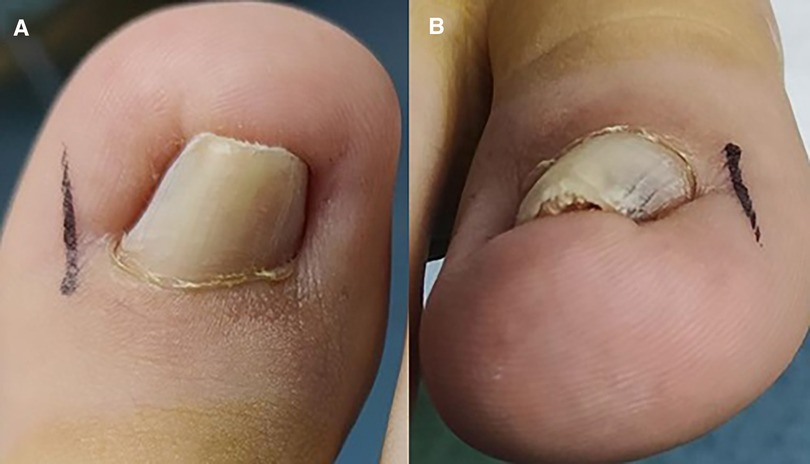What Is the Recovery Time After a Matricectomy?
What Is the Recovery Time After a Matricectomy?

Undergoing a matricectomy, a procedure designed to address toenail issues such as severe ingrown toenails or persistent fungal infections, can significantly improve your quality of life. If you’re considering this treatment or have already had it, understanding the recovery timeline can help you manage your expectations and plan your recovery process. Here’s a comprehensive look at what you can expect during the recovery period after a matricectomy.
What Is a Matricectomy?
Before delving into the recovery specifics, it’s essential to understand what a matricectomy involves. A matricectomy is a surgical procedure aimed at removing part or all of the toenail matrix—the tissue beneath the base of the toenail that produces new nail cells. By removing this area, the procedure prevents the toenail from growing back, which can be a permanent solution for recurring toenail problems.
Immediate Post-Procedure Care
The first step in recovery is the immediate post-procedure care. After a matricectomy, you’ll likely experience some discomfort and swelling in the affected toe. Your healthcare provider will offer guidance on pain management, which may include over-the-counter pain relievers or prescribed medication. Keeping your foot elevated as much as possible during the initial 24-48 hours can help reduce swelling and ease discomfort.
Wound Care
Proper wound care is crucial to ensure optimal healing and to prevent infection. The area will be bandaged following the procedure, and it’s essential to keep this dressing clean and dry. Your doctor will provide specific instructions on how often to change the bandage and when to follow up for a wound check. Avoiding soaking the foot in water until cleared by your physician is also important to maintain the integrity of the healing wound.
Activity Restrictions
During the early stages of recovery, limiting physical activity is recommended to promote healing. It’s advisable to avoid high-impact exercises or activities that put strain on your foot. Gentle walking is typically encouraged, but it’s important to listen to your body and not push through any pain. Most patients can gradually return to their normal activities within a few weeks, but always follow your doctor’s advice regarding specific activity restrictions.
Pain and Discomfort
Some level of pain and discomfort is normal after a matricectomy, but it should be manageable with the appropriate pain relief methods. The intensity of pain can vary from person to person and may depend on the extent of the procedure. It’s important to communicate with your healthcare provider if you experience severe or persistent pain, as this could indicate a complication.
Healing Timeline
The healing process after a matricectomy typically unfolds in several stages:
- First Week: During the first week, you may experience swelling, bruising, and discomfort. The initial bandage may need to be changed a few times, depending on the amount of drainage. Most people return to light activities after a few days, but it’s essential to keep weight off the affected foot as much as possible.
- Two to Three Weeks: By this stage, the acute discomfort should decrease, and the wound will start to heal. Swelling and bruising should subside significantly. It’s often possible to resume more normal activities, but you should still be cautious and avoid any activities that might stress the area.
- One Month: Most patients find that their toe has healed sufficiently by the one-month mark, allowing them to return to regular activities and exercise routines. However, the toe may still be tender, so continue to wear comfortable, well-fitting shoes to avoid unnecessary pressure.
- Three to Six Months: Complete healing of the soft tissues and final adjustments in the nail area may take several months. The area where the nail was removed should be fully healed by this time, and any residual tenderness or sensitivity should have diminished.
Long-Term Care
After the initial recovery period, ongoing care and attention are essential to ensure the long-term success of the matricectomy. While the toenail will not grow back, it’s crucial to monitor the area for any signs of infection or complications. Regular follow-up appointments with your healthcare provider can help ensure that healing is proceeding as expected.
When to Seek Help
While most recoveries from a matricectomy are smooth, it’s important to be aware of signs that might indicate a problem. Contact your healthcare provider if you experience:
- Persistent or Severe Pain: While some discomfort is normal, severe pain that does not improve with medication may indicate an issue.
- Excessive Swelling or Bruising: Swelling should decrease over time. If it worsens or is accompanied by severe bruising, seek medical advice.
- Signs of Infection: Redness, warmth, or discharge from the wound site could be signs of an infection and should be addressed promptly.
Conclusion
Recovery after a matricectomy is generally straightforward, with most individuals experiencing a significant improvement in their toenail problems and a return to normal activities within a few weeks. By following your healthcare provider’s instructions and taking good care of your foot, you can expect a smooth recovery process. If you have any concerns or experience unusual symptoms, don’t hesitate to reach out to your medical team for guidance.
Understanding the recovery timeline and what to expect can help you manage your expectations and make the most of the benefits a matricectomy can offer.




